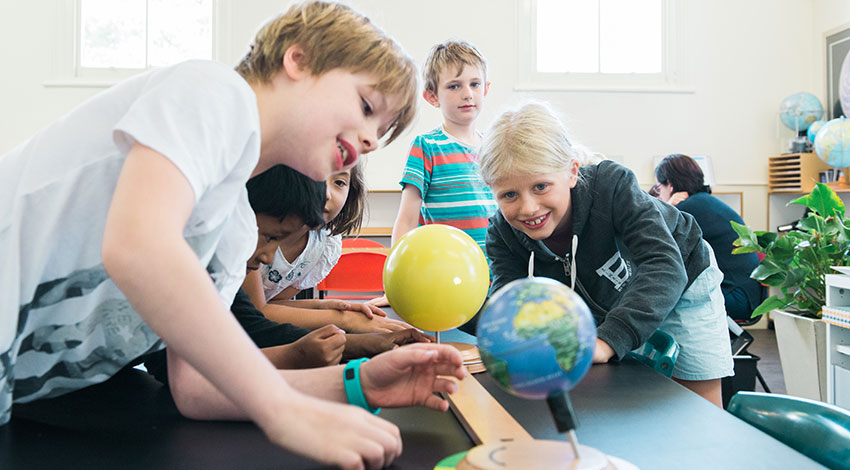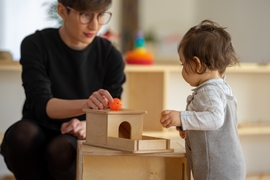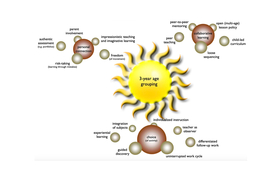
Montessori environments are prepared for multi-age groupings of children. These groupings operate very like family environments, providing key learning and development opportunities in two ways. First, multi-age groupings encourage children to aspire to the achievements of older peers. New students enter an established and mature environment with effective models of both work and social interaction. Second, multi-age groupings enable older children to learn to treat younger ones with care and respect, providing them with opportunities to reinforce their own learning and understanding through ‘peer teaching’. In multi-age groupings children are able to work through the curriculum at their own pace without being limited to one year of the curriculum only.
There are Montessori environments prepared for the following multi-age groupings:
- the Nido (early childhood setting for children from birth to children who are walking independently, approximately 15-18 months)
- the Infant Community (early childhood setting for children who are walking independently i.e. from 15-18 months to 3 years)
- the Children’s House (preschool, and/or long day setting for children from 3 to 6 years)
- the primary school (a classroom for children aged from 6 to 9 years and a classroom for children aged 9 to 12 years, or one classroom for children aged from 6 to12 years)
- the secondary school (a learning environment for students aged from 12 to 15 and a learning environment for students aged from 15 to 18 years)
The advantages of multi-age grouping include the following:
- the opportunity to experience three roles i.e. being the youngest, in the middle and the oldest, and the time to develop appropriate behaviours for all three roles
- experiences that stimulate a sense of caring and responsibility for others and the continuation from year to year of the culture of the class as a caring community
- experience of social cohesion and a sense of place gained from being in the same environment for three years
- exposure to a diversity of talents, aptitudes and interests, and a wide curriculum beyond a single year
- participation in peer teaching
- experience of appropriate behaviour and teaching and learning modelled from a broad age range of their peers
- development of self-esteem and a greater understanding of community responsibility from roles as leaders in the group
- groupings of similar interests and learning needs from across the age groups working together at their own pace
- work in the environment prepared for a broad age range, so students can see the whole progression of the curriculum for their group, progress independently in areas of strength and also revisit areas of knowledge comfortably as required
- experience of stability and social cohesion with the same teacher within a stable community for three years
- new students join a community that is already formed, and the teacher builds a solid relationship with each one.
- individual learning is more effectively supported because there is more opportunity for teachers to know the students well
- close knowledge by the teacher of approximately two thirds of the children in the class at the beginning of each new school year, providing ample opportunity to build strong relationships with the new one third who arrive each year.
- younger children observe materials and procedures used by older children, so they already have some familiarity with the materials, procedures and knowledge before the teacher gives them the lesson directly
Contemporary studies in neuroscience support the value of multi-age groupings in educational settings, as argued by Geake (2009: 184) in the following way:
"A school of the future will be structured around multi-age classes within a vertical curriculum structure that has children moving between academic levels for different subjects as needs be. Since brain development is driven by life experiences, rather than chronological age per se, individual children’s learning needs are best addressed by having them engage in appropriate curriculum for their stage of learning readiness"



